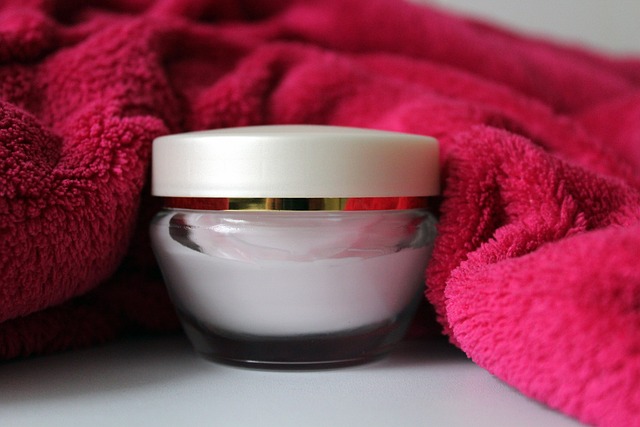Skin tags, common in foldy areas, can be removed for cosmetic or nuisance reasons. London offers diverse safe removal options, from at-home remedies like medicated tapes and natural blends, to professional procedures such as cryotherapy, lasers, surgery, and band lancing. Prioritizing safety involves understanding risks, consulting specialists, and following proper post-care practices after any London Skin Tag Removal treatment.
Skin tags, those tiny, harmless growths on the skin, are common yet often cause concern. Understanding their causes and types is the first step in deciding the best removal method. This article guides you through safe at-home options, exploring professional London skin tag removal services, and highlighting precautions to avoid complications. From post-removal care to recovery tips, learn how to eliminate skin tags with confidence while ensuring a smooth, healthy result, especially considering top-tier London skin tag removal options available.
- Understanding Skin Tags: Causes and Types
- Safe Removal Methods at Home
- Professional London Skin Tag Removal Options
- Precautions and Potential Risks
- Post-Removal Care and Recovery Tips
Understanding Skin Tags: Causes and Types
Skin tags, also known as acrochordons, are small, soft skin growths that usually appear on the neck, armpits, or groin area. They are benign and typically harmless, but many people prefer to remove them for aesthetic reasons or because they can be a nuisance. Understanding their causes and types is an essential first step when considering London Skin Tag Removal.
The primary cause of skin tags is friction and repeated irritation of the skin. This can occur due to clothing rubbing against the skin or as a result of hair growth. They are more common in certain areas where skin folds or creases, allowing the skin surface to trap moisture and cells, leading to their growth. Skin tags come in various types, including single tags, cluster tags, and those with a stem-like appearance. Recognizing these differences can help individuals make informed decisions when seeking London Skin Tag Removal treatments.
Safe Removal Methods at Home
When considering safe removal methods for skin tags at home, it’s essential to opt for gentle yet effective techniques. One popular and relatively safe approach is using over-the-counter medicated tapes or patches designed specifically for skin tag removal. These products contain ingredients like salicylic acid or silicon, which help to gently exfoliate the skin tag away over time. They are easy to use and can be a cost-effective solution for those seeking London Skin Tag Removal without professional intervention.
Another home remedy gaining traction is applying a mixture of apple cider vinegar and castor oil. This natural combination has been shown to soften and eliminate skin tags by disturbing the blood supply to the growth. However, it’s crucial to exercise caution during application and follow recommended dilutions to avoid potential skin irritation or damage. Always patch test any home remedies before full application for safe and effective London Skin Tag Removal.
Professional London Skin Tag Removal Options
In London, there are several professional options for safe and effective skin tag removal. Many clinics offer advanced procedures such as cryotherapy, where liquid nitrogen is used to freeze and destroy skin tags, a quick and relatively painless method with minimal downtime. Laser treatments are another popular choice, targeting the skin tags with precise laser beams to eliminate them without damaging surrounding skin.
For those seeking more traditional approaches, surgical excision is a common procedure performed by dermatologists. This involves cutting out the skin tag with a scalpel or surgical knife under local anaesthesia, ensuring a clean removal. Alternatively, band lancing uses a specialized tool to puncture and remove the skin tag, suitable for smaller tags. All these London Skin Tag Removal options are carried out by qualified professionals, guaranteeing safety and efficacy.
Precautions and Potential Risks
When considering London skin tag removal, it’s crucial to understand the potential risks and take necessary precautions. While many methods exist, from home remedies to clinical treatments, not all options are created equal. Certain procedures, if not performed correctly, can lead to infections, scarring, or even prolonged discomfort.
Before proceeding with any skin tag removal method, consult a qualified professional. They can provide guidance tailored to your specific needs, ensuring safety and effectiveness. Remember, proper hygiene and aftercare instructions are paramount to minimize risks, especially with at-home treatments.
Post-Removal Care and Recovery Tips
After safely removing skin tags, proper post-care is essential for a swift recovery. The first step is to keep the treated area clean and dry. Avoid touching or scratching the site, as this can introduce bacteria and potentially cause an infection. A gentle, fragrance-free cleanser is recommended for washing, followed by patting the area dry without rubbing. Applying a thin layer of over-the-counter antiseptic cream or ointment can help prevent infections and promote healing.
In the days following London skin tag removal procedures, it’s crucial to monitor any signs of irritation, redness, or swelling. Keeping the treated area protected with loose, breathable clothing is advisable. Avoid strenuous activities or environments that might irritate the skin, such as swimming or heavy perspiration. Staying hydrated and applying a light moisturiser can aid in the healing process, keeping the skin nourished and comfortable during recovery.
When considering the best practices for safely removing skin tags, it’s clear that both at-home remedies and professional London skin tag removal options offer viable paths. Understanding the causes and types of these benign growths empowers informed decision-making. While home methods provide convenience and cost savings, professional services in London ensure precise, safe removal with minimal risk. Regardless of chosen approach, proper post-removal care is vital for optimal recovery. By following these guidelines, you can bid farewell to skin tags with confidence and peace of mind.
